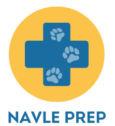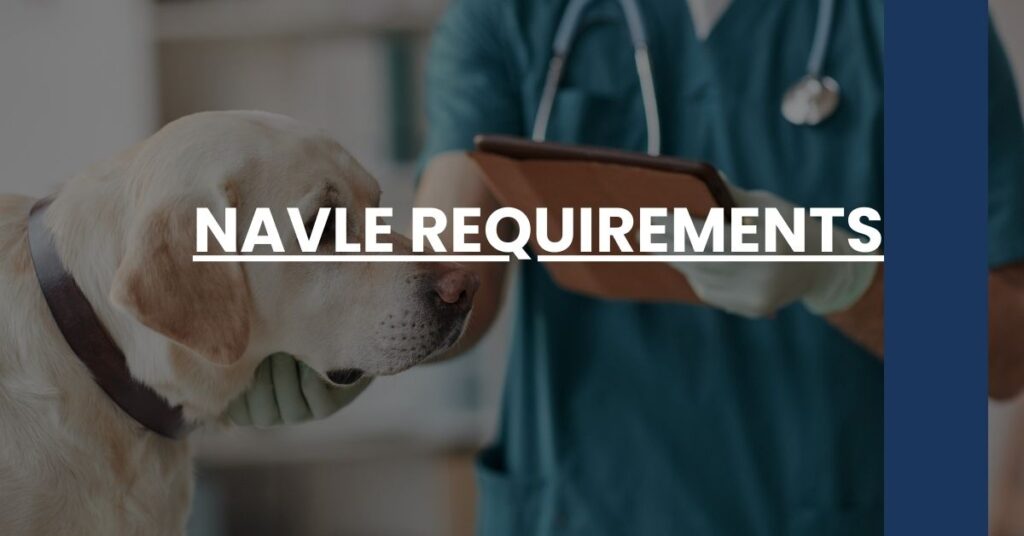Navigating NAVLE requirements ensures you’re on the right track to becoming a licensed veterinarian.
- Educational Criteria for NAVLE: Learn about the academic milestones you must achieve before qualification.
- Application Process: Discover the steps to apply and key deadlines you need to keep in mind.
- Exam Format and Preparation: Gain insight into what to expect and how to prepare effectively for the exam.
Meet NAVLE requirements with confidence, guided by our essentials.
- Understanding the NAVLE
- Who Is Eligible to Take the NAVLE?
- Educational Prerequisites for the NAVLE
- The NAVLE Application Process
- NAVLE Exam Dates and Scheduling
- Accommodations for Test Takers with Disabilities
- Preparing for the NAVLE
- Scoring the NAVLE
- After the NAVLE: State Licensure Requirements
- Frequently Asked Questions About the NAVLE
- Conclusion
Understanding the NAVLE
If you’re on the path to becoming a licensed veterinarian in North America, the North American Veterinary Licensing Examination (NAVLE) is the crucial hurdle standing between you and your license. Think of it as the final boss in a video game you’ve been playing for years — challenging, but conquerable with the right preparation and know-how.
The NAVLE is a comprehensive exam designed to evaluate your knowledge of veterinary sciences and your ability to apply it in real-world scenarios. Administered by the International Council for Veterinary Assessment (ICVA), it is a requirement for all veterinary graduates seeking licensure to practice in the United States and Canada. This examination measures your readiness to handle the responsibilities of general veterinary clinical practice.
Who Needs to Take It?
Primarily, if you’re a senior veterinary student or a recent graduate from an accredited veterinary program, you’ll have to pass the NAVLE. Not only is it recognized across North America, but it’s also a global standard for veterinary professionals aiming to work in the U.S. or Canada.
Exam Content
The NAVLE consists of 300 scored multiple-choice questions. These span across a variety of animal species and areas of practice, ensuring a well-rounded assessment of your veterinary expertise. With questions that challenge your clinical reasoning, this isn’t just a test of knowledge but also of decision-making skills.
Who Is Eligible to Take the NAVLE?
Eligibility is your starting line. Meeting the NAVLE requirements signifies that you’ve successfully acquired the fundamental qualifications to take a shot at the exam.
- Graduates from Accredited Schools: Firstly, if you’re a graduate from an AVMA-accredited veterinary program, you’re eligible to apply.
- Senior Veterinary Students: If you’re in your final year at an AVMA-accredited school, the path is clear for you as well.
- International Certification Holders: Perhaps you have been certified through the ECFVG (Educational Commission for Foreign Veterinary Graduates) or the PAVE (Program for the Assessment of Veterinary Education Equivalence). In that case, you’re also in the clear.
Documentation Needed
Before you can sit for the NAVLE, ensure that you gather and submit necessary documentation verifying your educational status or certifications. Keeping abreast of the requirements and maintaining organized records will simplify your application process.
Educational Prerequisites for the NAVLE
Your academic journey lays the foundation for your NAVLE eligibility. Here’s the lowdown:
- Accredited Veterinary Program: Your degree should come from an institution recognized by the AVMA Council on Education. This accreditation ensures the quality of your veterinary education aligns with North American standards.
- Final-Year Status or Graduate: You should either be approaching graduation or have thrown that mortarboard in the air already.
- Certification Programs: If you’ve pursued veterinary education internationally, obtaining ECFVG or PAVE certificates is a vital step to prove equivalence to North American education standards.
Remember, when you choose to take the NAVLE can impact your academic and professional trajectory, so align your educational accomplishments with the NAVLE’s schedule.
The NAVLE Application Process
Embarking on the application process for the NAVLE needs attention to detail and an eye on the clock for meeting deadlines.
- State or Provincial Approval: Every aspiring candidate must get approval from a state or provincial licensing board.
- NAVLE Application: Following the board’s approval, head on to the ICVA website to complete the main NAVLE application, which includes paying the requisite fees.
- Deadline Watch: Deadlines are non-negotiable. Late applications typically aren’t entertained, so keep tabs on the cutoff dates for both the NAVLE and your state board.
Navigating this bureaucratic labyrinth can be straightforward if you’re organized. Think of it as a mini-test in following instructions — a skill you’ll need as a practicing veterinarian.
Scheduling Your Exam
Once your application is approved, you’ll receive a permit to schedule your NAVLE test date. This isn’t a process to delay — testing slots can fill up, and flexibility on dates might be just what you need to accommodate your study schedule.
NAVLE Exam Dates and Scheduling
Choosing the right date for your NAVLE isn’t just about when you feel you’ll be ready. It’s essential to balance preparation time with application deadlines and venue availability.
- Typical Timing: The NAVLE is offered twice a year, in the fall and spring. Specific dates vary yearly, but they generally fall within certain months.
- Window of Opportunity: Each test cycle has a designated window during which you can take the exam. Missing this means waiting for the next cycle.
- Scheduling Protocol: Once approved, use your scheduling permit to secure your spot. You can do this via the ICVA or Prometric test centers.
Remember, it’s imperative to have a government-issued ID on test day that matches your application details. The last thing you want is a bureaucratic snafu over a mismatched detail.
Accommodations for Test Takers with Disabilities
Understanding that equal access for all test-takers is a must, the NAVLE has protocols in place to accommodate individuals with disabilities. The aim is not only compliance with legal standards like the Americans with Disabilities Act but also a commitment to enabling every aspiring veterinarian an equal opportunity to showcase their competencies.
Requesting Accommodations
If you require accommodations:
- Indicate Need on Application: Your need for accommodations must be indicated on your NAVLE application.
- Provide Supporting Documentation: Submit documentation that verifies the nature of your disability and supports the specific accommodations you’re requesting.
- Allow Processing Time: Requests for accommodations should be made well in advance of your desired testing date to allow sufficient time for review and arrangement.
Requests for testing accommodations are treated with confidentiality and are reviewed on a case-by-case basis, ensuring that the accommodations provided align perfectly with your needs.
Common Accommodations
Examples of accommodations often provided include:
- Extended Testing Time: If test-taking speed is impacted by your disability, additional time can be crucial.
- Additional Break Periods: For those who need a moment to refocus, more frequent or longer breaks can be a boon.
- Accessible Exam Centers: If travel to a standard testing center is a challenge, special arrangements might be possible to ensure you can test in an accommodating environment.
For further information, make sure to consult the NAVLE accommodation guidelines, which offer a comprehensive overview of how the process works and what you can expect.
Preparing for the NAVLE
Preparation is the bridge between your veterinary education and the successful completion of the NAVLE. A strategic approach to your study plan will make all the difference.
Develop a Study Plan
- Map Your Study Timeline: Knowing what you need to cover and the time you have can ease study stress.
- Balance Your Topics: Ensure you’re devoting enough time to each subject area without over-indexing on one at the expense of another.
Engage with Study Materials
- Practice Exams: Simulations of the real deal can help you identify your strengths and areas for improvement.
- Focus on Weak Areas: Use practice exam results to sharpen your knowledge where it counts most.
- Official NAVLE Preparation Resources: ICVA-provided materials can give you direct insight into the type of content you will encounter.
Remember, it’s not just about cramming information — it’s about ingraining knowledge to recall and apply under exam conditions. Study groups and forums can also provide support and exchange of learning strategies.
Scoring the NAVLE
The NAVLE’s scoring system is numerical but understanding it in the context of your veterinary career is qualitative — it translates to your capability to practice veterinary medicine confidently.
- Scoring Range: The scores for the NAVLE range from 200 to 800.
- The Pass Mark: A score of 425 is the standard benchmark that typically indicates a passing result.
If You Don’t Pass
- Review and Reflect: Understand which areas need more attention.
- Retake Policy: Familiarize yourself with the NAVLE retake policy, including the limitations on the number of attempts and time frames.
Falling short doesn’t have to be the end of your journey. With reflection and renewed preparation, success is within your reach on a subsequent attempt.
After the NAVLE: State Licensure Requirements
The NAVLE is key to opening the door to your veterinary practice, but it’s not the only piece of the puzzle. Each state has further licensure requirements that complement the NAVLE qualifications.
Know Your State’s Regulations
- Additional Exams: Some regions may require supplemental jurisprudence or state law exams.
- Professional Standards: Be aware of continuing education requirements to maintain your licensure.
You can use your NAVLE success as a springboard to meet these additional requirements and begin your veterinary practice with confidence.
Frequently Asked Questions About the NAVLE
Questions abound when tackling a sophisticated exam like the NAVLE. Addressing common queries can clarify NAVLE requirements.
Common Inquiries
- Registration Deadlines: Make sure you understand the timelines for both your state and the NAVLE itself.
- Result Expectations: Know when and how you will receive your scores to quell post-exam anxiety.
The ICVA FAQ page is an excellent resource for resolving queries and easing concerns during your NAVLE preparation and application process.
Conclusion
The journey to becoming a licensed veterinarian is an arduous yet rewarding one. Navigating NAVLE requirements effectively is central to this path. Whether it’s understanding the educational prerequisites, grasping the application intricacies, or optimally preparing for the exam itself, each step you take brings you closer to achieving your goal of becoming a licensed veterinarian.
Remember, it’s not just about learning to pass an exam. It’s about preparing to contribute to a field that impacts animal welfare and public health. So, embrace the challenge of the NAVLE, fulfill the requirements with diligence, and look forward to the day when you can proudly wear your title of DVM. Your hard work, supported by comprehensive preparation, will soon culminate in the ability to practice the profession you’ve devoted yourself to passionately.
NAVLE requirements breakdown: Essential eligibility, application process, test format, and scoring for aspiring veterinarians seeking licensure.

